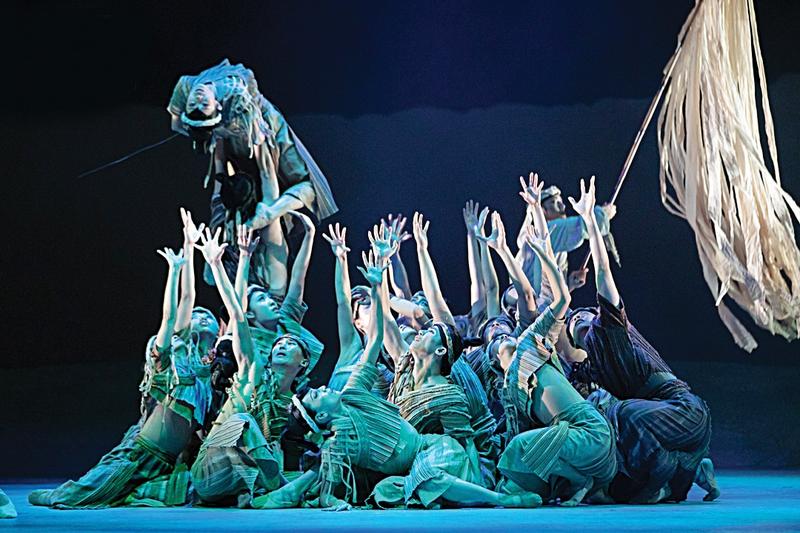 Hong Kong Dance Company’s dramatization of the legend of Mazu, the sea goddess, provokes audiences to rethink their relationships with nature. (PHOTO PROVIDED TO CHINA DAILY)
Hong Kong Dance Company’s dramatization of the legend of Mazu, the sea goddess, provokes audiences to rethink their relationships with nature. (PHOTO PROVIDED TO CHINA DAILY)
COVID-19 has changed many aspects of social behavior. Having spent long periods in isolation or hunkered down at home with immediate family owing to restrictions on travel and socializing during the months of the pandemic, many of us have grown more aware of the importance of the people in our lives as indeed that of the ways in which we interact with nature.
Hong Kong Dance Company’s (HKDC) latest show, Mazu: The Sea Goddess, inspired by a well-known Chinese legend, pushes viewers into having a rethink about their own relationship with nature. The core idea of the piece is to underscore the value of humans living in harmony with the natural world.
As venues remain shut because of the pandemic, HKDC, like several other cultural organizations in the city, has taken recourse to online streaming. Premiered online in December 2020, Mazu: The Sea Goddess is based on the folklore around the figure of the piece’s eponymous protagonist, a goddess who even now has considerable influence in the south of China.
Mazu: The Sea Goddess marks the first collaboration between Hong Kong Dance Company and director-choreographer Yan Hongxia, who is a national first-class artist from the Chinese mainland. In the dance piece Yan has tried to depict Mazu not only as a widely-worshipped goddess in traditional Chinese culture, but also as a woman experiencing normal human emotions such as excitement, sadness, happiness and anxiety.
Before she came to be regarded as the sea goddess, Mazu was a girl called Lin Mo, born and raised in the ancient island of Meizhou in Fujian province. Once on a stormy night, she jumped into a turbulent sea to save a group of drowning fishermen.
Yan has reimagined the legend of Mazu in a regular social set-up. The main character of Lin Mo/Mazu, played by Pan Lingjuan, comes across as totally relatable. Both she and Wong Cheuk-wing (who plays Lin Mo as a child) deliver outstanding performances, expressing the purity and bravery of the main character with aplomb.
Rather than emphasizing the divinity of Mazu the sea goddess, the director and choreographer has tried to draw attention to Lin Mo’s growth as a human being. Besides reinterpreting a piece of folklore, the dance drama highlights the significance of being respectful to nature; the courage, convictions and selflessness of Lin Mo, as well as the virtues of Chinese culture, as reflected in the kind behavior of the people in Lin Mo’s village.
Set designer Jan Wong has made imaginative use of silk fabric to create a feel of the tempest. Colors play a crucial role in expressing the emotions and felt by the characters. For example, the Priest (played by HKDC’s principal dancer Huang Lei) wears black clothes and accessories to symbolize misfortune and death. Red silk is used like a leitmotif throughout the play, not only to mark different chapters in the story and their inter-connectedness but also to serve as an emblem of passion, persistence and love.
The message of the show seems to be that love and sympathy can help overcome disasters and establish a harmonious relationship between individuals and their surroundings. As much of the world is still struggling with the challenges posed by the pandemic, watching the legend of Mazu come to life makes for a particularly meaningful experience.


